Discover effective strategies and inspiring insights for learning a language with dyslexia. Overcoming challenges and embracing your unique strengths is key to language acquisition success.
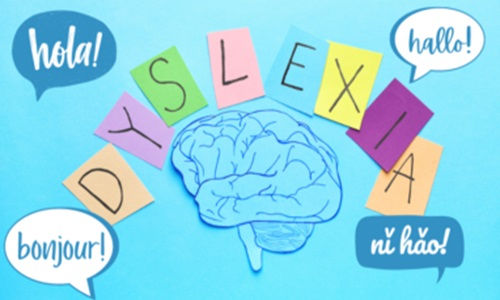
Introduction
Learning a new language can be a rollercoaster ride for anyone, but for those with dyslexia, it's like tackling that rollercoaster blindfolded! But hey, don't let that scare you off. If you're dyslexic and dreaming of becoming bilingual (or even multilingual), you're in for a treat.
Dyslexia, a learning disability that primarily affects reading and writing, can impact language acquisition in various ways. However, with the right strategies and mindset, individuals with dyslexia can successfully learn a new language and unlock a world of opportunities.
In this article, we will explore the unique experiences and challenges faced by individuals with dyslexia when learning a language. We will also discuss effective strategies and tips to help you overcome these challenges and achieve language learning success.
Understanding the Challenge
What's the Deal with Dyslexia and Language Learning?
First things first, let's get something straight: dyslexia doesn't mean you can't learn a new language. Nope, not even close! It just means you might need to take a slightly different path to get there. Dyslexia affects how your brain processes language, which can make reading, writing, and sometimes speaking a bit trickier. But here's the kicker: it can also give you some pretty cool superpowers when it comes to language learning!
Understanding Dyslexia and Language Acquisition
Dyslexia is characterized by difficulties with phonological awareness, decoding, and fluency. These challenges can manifest in various ways when learning a new language, such as:
Difficulty with pronunciation:
Dyslexia can make it challenging to accurately pronounce new sounds and words in a foreign language.
Trouble with vocabulary:
Learning new words and their meanings can be more difficult for individuals with dyslexia due to difficulties with memory and retrieval.
Issues with grammar and syntax:
Understanding and applying the rules of grammar and syntax can be challenging for individuals with dyslexia.
Reading and writing difficulties:
Reading and writing in a new language can be particularly challenging for individuals with dyslexia, as these skills are often closely linked.
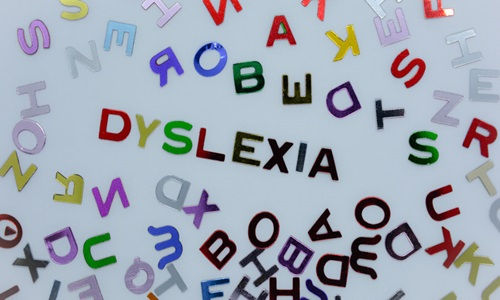
The Dyslexic Advantage in Language Learning
You heard that right, advantage! Dyslexics often have:
Killer problem-solving skills
A knack for seeing the big picture
Creative thinking that's off the charts
An ear for sounds and accents
These traits can be total game-changers when you're diving into a new language. So, chin up! You've got this.
Strategies for Success
1. Multi-Sensory Learning: Your New Best Friend
When you're learning a language with dyslexia, it's time to bring all your senses to the party. Here's how:
Visual learners: Use colorful mind maps, flashcards, and pictures.
Auditory learners: Listen to podcasts, music, and audiobooks in your target language.
Kinesthetic learners: Act out words and phrases; use language learning apps with interactive games.
The more senses you involve, the better chance that information has of sticking in your brain. It's like Velcro for your memory!
2. Technology: Your Secret Weapon
In this digital age, we've got tools coming out of our ears to make language learning a breeze:
Text-to-speech apps: Let them do the reading for you!
Speech recognition software: Practice your pronunciation without stage fright.
Language learning apps with dyslexia-friendly features: They're out there, and they're awesome.
Don't be shy about using these tools. They're not cheating; they're leveling the playing field!
3. Chunk It Up: Small Bites, Big Results
Rome wasn't built in a day, and neither is your language skill. Break your learning into manageable chunks:
Start with basic greetings and everyday phrases.
Move on to simple sentence structures.
Gradually introduce more complex grammar and vocabulary.
Remember, slow and steady wins the race. Or, in this case, learns the language!
Overcoming Common Hurdles
Reading: Making Friends with Foreign Text
Reading in a new language can feel like deciphering an alien code. Here are some tricks to make it less daunting:
Use a ruler or your finger to keep your place.
Try different fonts; some are more dyslexia-friendly than others.
Read along with an audiobook to reinforce the connection between sound and text.
Writing: Taming the Wild Letters
Writing can be a real beast when you're dyslexic, but don't let it scare you off.
Use spell-checkers and grammar tools (they're lifesavers!).
Practice typing instead of handwriting if it's easier.
Focus on getting your ideas down first, then worry about perfecting the language.
Speaking: Finding Your Voice
Nervous about speaking? Join the club! But here's the secret: everyone feels a bit silly when they start speaking a new language. Embrace it:
Practice in front of a mirror.
Record yourself and listen back.
Find a language exchange partner who's patient and understanding.
Remember, every mistake is a step towards fluency. So go ahead, make 'em!
Building Confidence and Motivation
Celebrate Every Victory
Learning a language with dyslexia is no small feat. Give yourself a pat on the back for every
New word mastered
Conversation attempted
Page read
Writing task completed
These little wins add up to big progress!
Find Your Tribe
Surround yourself with supportive people who get what you're going through.
Join online forums for dyslexic language learners.
Attend language meetups and be open about your challenges.
Connect with a tutor who has experience teaching dyslexic students.
Having a cheering squad can make all the difference when the going gets tough.

Unlocking Language Learning: The Power of the Keyword Method
The Keyword Method is a mnemonic technique designed to enhance foreign vocabulary acquisition. Here's how it works:
Choose a target word in the foreign language.
Select a keyword in your native language that sounds similar to the target word.
Create a vivid mental image linking the keyword to the target word's meaning.
This method is particularly effective for:
Students learning new vocabulary
Individuals with learning disabilities, including dyslexia
Adult learners seeking to improve memory performance
The Keyword Method has been shown to enhance vocabulary retention and can be adapted for various learning styles, incorporating visual, auditory, and kinesthetic elements. It's a versatile tool for building content-specific vocabulary and unlocking informational text comprehension.
Empowering Dyslexic Learners: The Role of Assistive Technologies in Language Acquisition
Assistive technologies (AT) are tools and software designed to support individuals with learning difficulties, including dyslexia, in their educational journey. These technologies are particularly useful for language learning with dyslexia because:
They bridge the gap between reading/writing skills and grade-level materials.
AT can improve specific skill deficits, such as reading and spelling.
They offer compensatory strategies for learning challenges.
Speech-to-text technology helps students who find speaking easier than writing.
Math assistive software addresses difficulties in numerical processing.
By leveraging these tools, dyslexic learners can increase their self-reliance and confidence in language acquisition, ultimately enhancing their overall learning experience and academic performance.
Transparent vs. Opaque Languages and Dyslexia: A Key to Unlocking Learning
For individuals with dyslexia, choosing a language to learn can be strategic. Transparent languages, where letters consistently correspond to sounds, can offer advantages. English, for instance, is an opaque language with many irregularities in sound-symbol relationships. In contrast, languages like Spanish or Italian have a more predictable system, making it easier to sound out new words and potentially reducing the reading difficulties faced by people with dyslexia.
However, it's important to note that research on the sole impact of language transparency on dyslexia is inconclusive. Ultimately, the best language to learn depends on your individual interests and learning style.
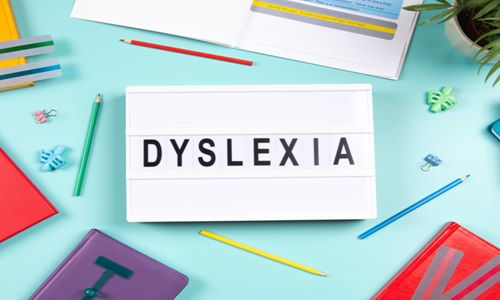
Dyslexia-Friendly Languages: Unlocking Linguistic Potential
For people with dyslexia, certain languages are generally easier to learn due to their linguistic characteristics:
Spanish: Considered a good choice due to its consistent phonetic rules and limited vowel sounds.
German and Italian: These languages may be easier for dyslexic learners due to their more consistent spelling-to-sound correspondence.
Sanskrit and Hindi: Highly phonetic languages that may facilitate learning for dyslexic individuals.
Welsh, Czech, and Finnish: Children speaking these languages often learn to read more quickly than English speakers.
The key factors that make these languages more accessible for dyslexic learners include consistent phonetic rules, regular spelling patterns, and a close correspondence between written and spoken forms. These characteristics reduce the cognitive load associated with decoding words, allowing dyslexic learners to focus more on comprehension and communication.
Challenging Languages for Dyslexic Learners: Navigating Linguistic Complexity
The hardest languages for people with dyslexia to learn are typically those with:
Opaque orthographies: Languages where the relationship between written symbols and sounds is less consistent.
Complex spelling rules: Languages with numerous irregularities in pronunciation and spelling.
Tonal languages: These can be challenging due to the added complexity of pitch changes affecting meaning.
Specific examples of difficult languages for dyslexic learners include:
English: Known for its inconsistent spelling-to-sound correspondence.
French: Less easy to highlight similarities between written and spoken forms.
Danish: Also challenging due to its opaque orthography.
These languages require more cognitive effort for dyslexic learners to decode and process, making them harder to master compared to more phonetically consistent languages.
Immersion Programs and Dyslexia: Can They Help?
Immersion programs can be a great way to learn a language, but for students with dyslexia, the decision can be a bit more complex. There isn't a simple yes or no answer; it depends on the individual student and the specific program.
Here's why:
Challenges: Immersion programs rely heavily on reading and writing, which can be difficult for students with dyslexia.
Potential Benefits: Research suggests that with proper support, immersion programs can actually benefit students with dyslexia, even though they may initially struggle more than their peers.
Why Learning a Foreign Language Can Benefit People with Dyslexia
While dyslexia can pose challenges in learning a new language, there are also potential benefits to the process. Here's why:
New Approach: Learning a new language can provide a fresh perspective on language learning, potentially bypassing some of the difficulties faced with their native language.
Focus on Communication: Language acquisition can prioritize spoken communication over written exercises, which can be advantageous for dyslexic learners.
Overall, the experience of learning a foreign language can be empowering for individuals with dyslexia, and it can boost their overall confidence in using language.
Overcoming Challenges: Effective Strategies for Learning a Language with Dyslexia
While dyslexia can present unique challenges, there are many effective strategies that can help individuals with dyslexia overcome these obstacles and achieve language learning success.
1. Embrace Your Strengths
Visual learning: If you are a visual learner, utilize flashcards, diagrams, and other visual aids to reinforce vocabulary and grammar concepts.
Auditory learning: If you are an auditory learner, listen to podcasts, audiobooks, and music in your target language to improve your listening comprehension and pronunciation.
Kinesthetic learning: If you are a kinesthetic learner, try using physical gestures, role-playing, and other hands-on activities to learn the language.
2. Break It Down
Chunk information: Break down new vocabulary and grammar concepts into smaller, more manageable chunks to avoid feeling overwhelmed.
Use mnemonics: Create memorable mnemonic devices to help you remember new words and phrases.
Practice regularly: Consistent practice is key to language learning success. Set aside time each day to practice speaking, listening, reading, and writing in your target language.
3. Seek Support
Find a language partner: A language partner can provide you with opportunities to practice speaking and listening in a supportive environment.
Join a language exchange group: Connect with other language learners and native speakers through online or in-person language exchange groups.
Consider professional help: If you are struggling with language learning, consider working with a language tutor or speech-language therapist who specializes in dyslexia.
4. Be Patient and Persistent
Celebrate small victories: Acknowledge and reward your progress, no matter how small.
Don't give up: Learning a new language takes time and effort. Be patient with yourself and keep practicing.
Real-Life Success Stories
Meet Sarah: From Struggle to Fluency
Sarah always thought her dyslexia would keep her from learning French. But with determination and the right strategies, she's now living in Paris, ordering croissants like a pro! Her advice? "Don't let anyone tell you what you can't do. Find what works for you and go for it!"
Jake's Journey: Turning Dyslexia into a Superpower
Jake discovered that his dyslexic brain gave him an edge in picking up spoken Japanese. While his classmates struggled with the sounds, Jake's ear for language helped him nail the pronunciation. Now he's working as a translator in Tokyo!
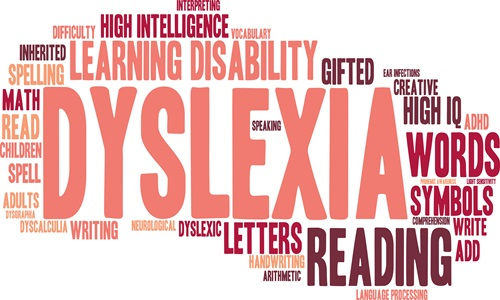
FAQs: Your Burning Questions Answered
Q: Can dyslexics really become fluent in another language?
A: Absolutely! With the right strategies and support, dyslexics can achieve fluency just like anyone else.
Q: What's the best language for dyslexics to learn?
A: There is no one-size-fits-all answer to this question. The best language for you to learn will depend on your individual strengths and interests. It depends on the individual, but many dyslexics find success with languages that have consistent phonetic rules, like Spanish or Italian.
Q: How long will it take me to learn a new language?
A: Everyone's journey is different. Focus on progress, not perfection, and you'll get there!
Q: Should I tell my language teacher about my dyslexia?
A: Yes! Being open about your needs can help your teacher provide better support and understanding.
Q: Can I learn a language with dyslexia?
A: Absolutely! With the right strategies and mindset, individuals with dyslexia can successfully learn a new language.
Q: What are some effective language learning apps for dyslexia?
A: There are many language learning apps available that can be helpful for individuals with dyslexia.
Q: How can I improve my pronunciation when I have dyslexia?
A: Practice listening to native speakers and try to mimic their pronunciation. You can also work with a language tutor or speech-language therapist to improve your pronunciation.
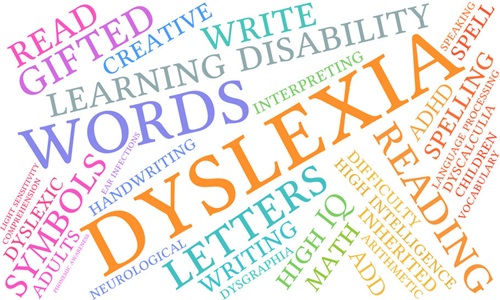
Conclusion: Your Language Learning Adventure Awaits!
Learning a language with dyslexia might feel like climbing Mt. Everest in flip-flops, but guess what? You've got the gear, the guide, and the grit to make it happen. Remember, your dyslexic brain isn't a roadblock; it's your secret weapon. With its creativity, big-picture thinking, and unique problem-solving skills, you're equipped to approach language learning in ways others might never think of.
By embracing your strengths, breaking down information, seeking support, and being patient and persistent, you can overcome these challenges and achieve language learning success. Remember, every language learner has a unique journey, and your individual strengths and abilities will guide you towards your goals.
So, what are you waiting for? Dive in, make mistakes, laugh at yourself, and watch as a whole new world of language opens up before you. You've got this, and the view from the top is going to be spectacular! Now, go out there and show the world what dyslexic language learners can do. Bonne chance! Buena suerte! Viel Glück! (That's good luck in French, Spanish, and German; see you're multilingual already!)
010101.jpg)
Comments